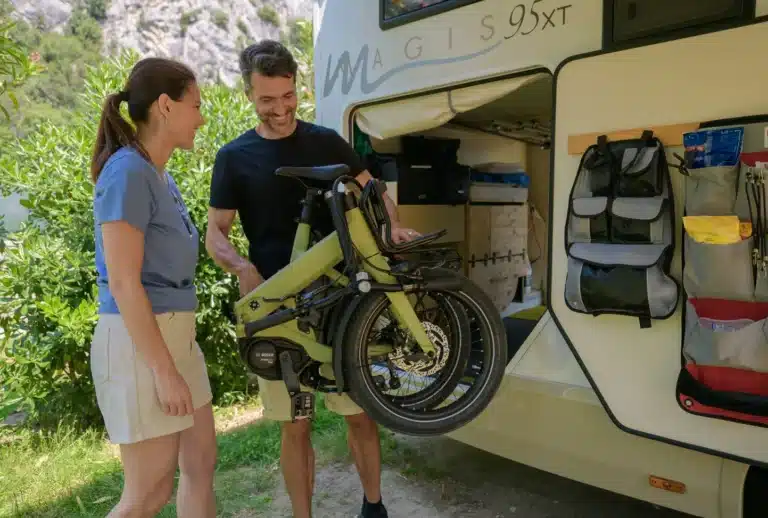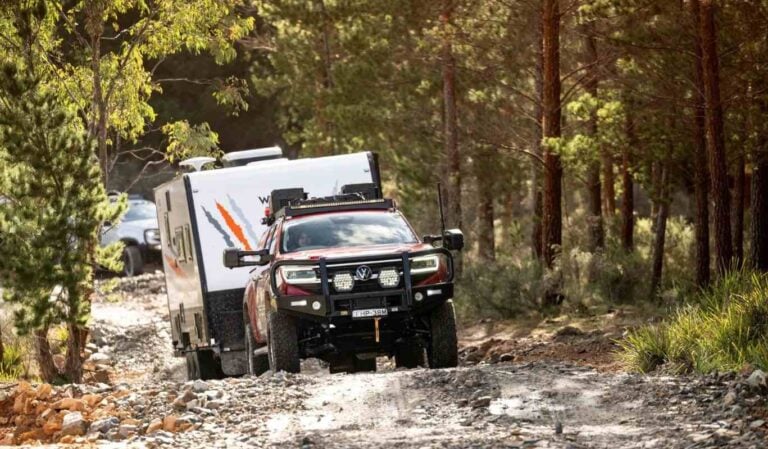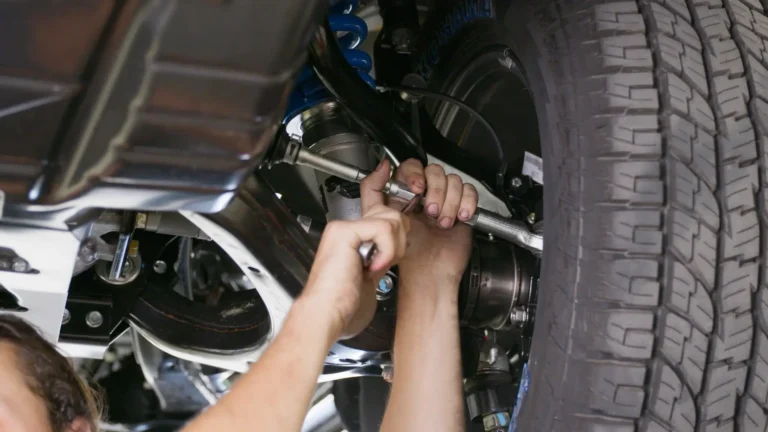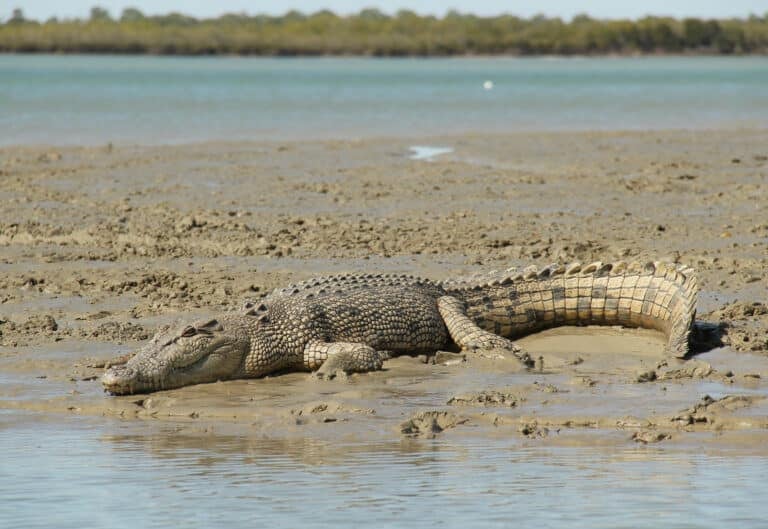
Words Colin Kerr and RV Daily
Late last month, the popular Northern Territory swimming hole of Bitter Springs was closed following a crocodile sighting. Several would-be swimmers spotted the two-metre croc lurking in the thermal waters, beloved by tourists driving through the Red Centre.
Every dry season, there’s much fanfare as swimming holes reopen in the NT after authorities complete crocodile surveys, trapping and removing any salties that had moved in during the wet. But there’s always the inevitable scare from the one that got left behind. In July 2023, a man was mauled by a 2.4-metre crocodile while swimming at popular Wangi Falls in Litchfield National Park. The swimming hole, 90 minutes south of Darwin, was closed while the croc was trapped and later euthanised.
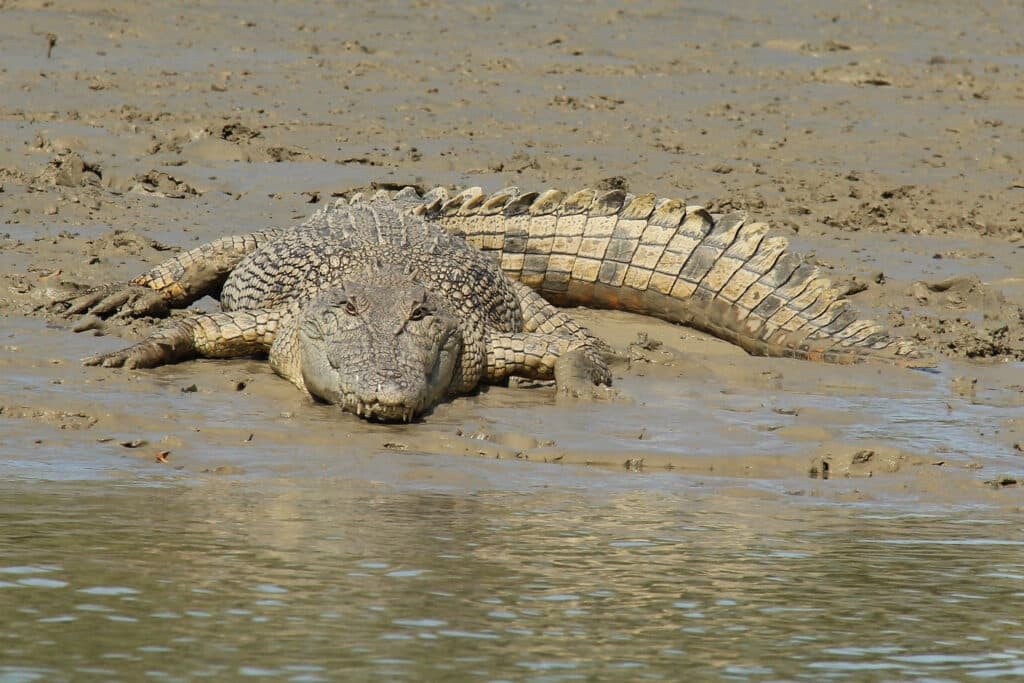
Dicing with death
Being ‘croc wise’ is part and parcel of travelling in northern Australia, and authorities are quick to remind people that no waterways are guaranteed to be free of deadly crocodiles. Despite the warnings, people continue to put their lives at risk. Earlier this month a man was crucified on social media for diving into croc-inhabited waters off the Mangrove Boardwalk at East Point, in Darwin.
Croc numbers have exploded since 1971, when culling bans were introduced. At that time they numbered about 3000 in the NT. Today, there are estimated to be about 100,000 crocs in the Territory alone. Despite a continuing campaign for culls to be reintroduced – including in Queensland by federal independent MP Bob Katter – crocodiles remain a protected species.
Living with crocs
How then do you avoid getting caught in the jaws of a prehistoric throwback from the dinosaur age? It’s quite simple. Stay out of the water. And keep clear of the water’s edge where crocs may be lurking.
Here’s everything you need to know about the crocodile threat in Australia.
Australia is home to two species of crocodile: the estuarine or saltwater crocodile (crocodylus porosus) and the Johnston River of freshwater crocodile (crocodylus johnstoni). While both have a terrifying appearance, only the estuarine croc – growing up to five metres or more – is dangerous to humans.
Freshwater crocs are mostly found in freshwater streams or lagoons and occasionally in tidal, brackish water. They usually grow to around 2.5 metres (male) and two metres (female), although slightly bigger ones have been recorded. They are very timid and not considered dangerous, and have only been known to attack humans when cornered, aggravated or provoked.
Freshwater crocodiles are easily recognised by their long, narrow snout and a row of four large scales at the base of their heads, while estuarine crocodiles have a short, very broad, snout.
In the northern tropics, unless you know otherwise, assume that every waterway is populated with salties. Also know that the name ‘saltwater’ crocodile is misleading, as the man-eaters have been found hundreds of kilometres upstream in freshwater lagoons and swamps.
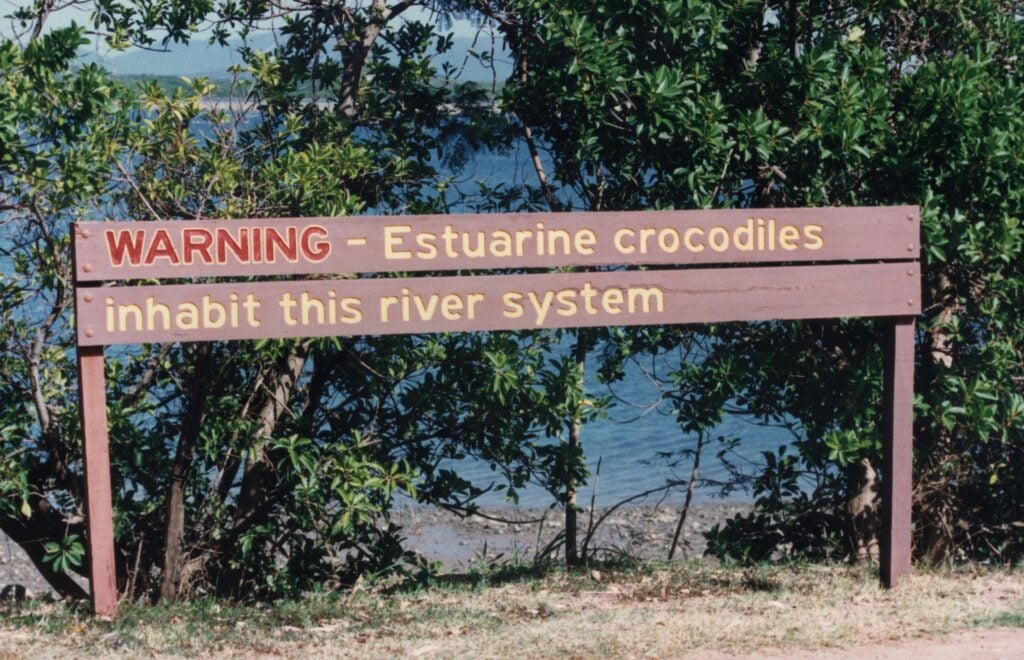
Be croc safe
To keep out of snapping jaws following these 13 croc-safe tips:
1. Always take heed of crocodile warning signs.
2. Stand at least three or four metres back from the water’s edge when fishing and remain alert. Crocodiles can move incredibly fast, so always have a clear escape route.
3. Never stand on logs or low rock ledges overhanging deep water. Crocs can jump clear of the water to take prey. You can see them leap vertically out of the water to catch food on a ‘jumping’ crocodile cruise on the Adelaide River, near Darwin.
4. Avoid going near the edge of deep, murky water – just because you can’t see a crocodile, doesn’t mean there aren’t any nearby… watching you.
5. Take care on dry ground. During cooler months, crocodiles spend much of their day basking in the sun on riverbanks. You can often see their ‘slide’ marks beside the water. They are highly territorial creatures, so tracks mean crocs are never far away.
6. Do not use canoes or kayaks in crocodile-inhabited waters. These craft can resemble a crocodile from under water and, with their territorial instincts, crocs will attack a crocodile on their patch. Keep arms and legs inside any boat when in crocodile waters, and be especially wary near boat ramps.
7. During nesting season (October to April) female crocodiles (who lay an average of 50 eggs) will fiercely protect their nests, which are usually on the banks above high water levels. Stay well away.
8. Crocodiles are most active at night when they hunt for prey, but can go several weeks without eating. They are, however, opportunistic hunters. Even if they are not hungry, they will often still attack easy prey and store their catch under a riverbank or in submerged tree roots and return later to feed.
9. Do not clean your catch, discard fish waste or prepare food near the water’s edge. Don’t dispose of food scraps around river banks, and definitely do not feed crocodiles!
10. Do not swim in waters inhabited by crocodiles. Full-stop. Ask the locals and if you’re not sure, stay out.
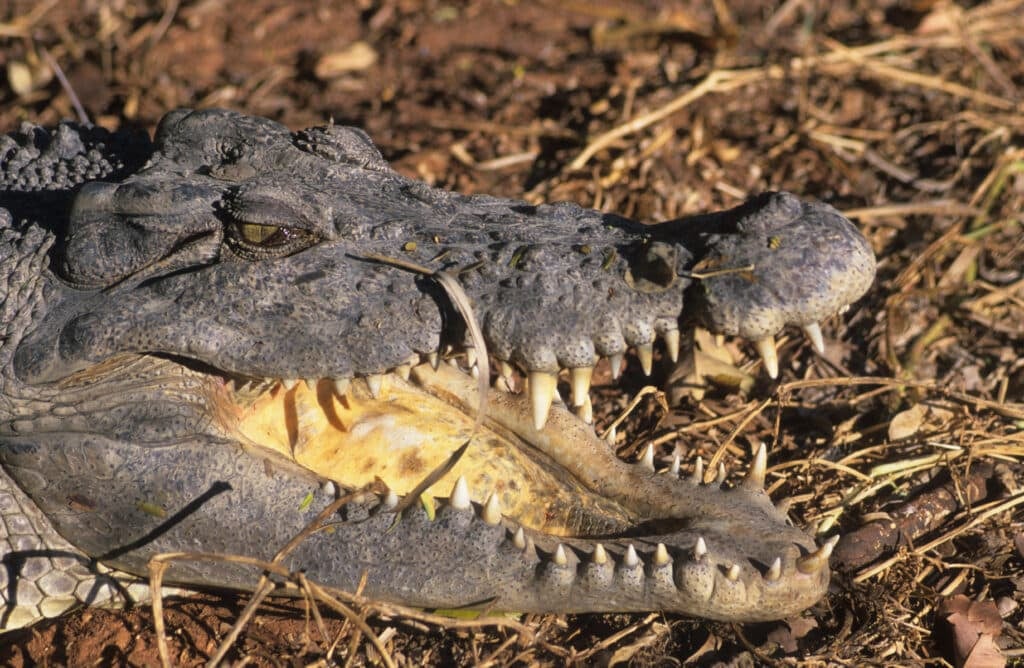
11. Set up camp at least 50 to 100 metres away from the water and, even then, be careful. We’ve all seen the photo of the caravanner who woke up with a croc under their awning. Camp well away from the water, especially areas where stock and animals cross or drink.
12. Keep your family dog well away from the water in croc territory, as dogs attract crocodiles and regularly fall victim to attacks.
13. If you need to collect water, choose a shallow spot. Quickly scoop up your water in a bucket and move well away, and don’t keep going back to the same spot. Crocodiles are cunning. They notice this routine, particularly when animals (out of habit) come back to the same place each day to drink. Crocodiles will often lay waiting ready to strike. In deep water, collect your water from the bank using a bucket with a rope attached, and then quickly move away.
While their main diet is fish, crabs, snakes and other water-dwelling species, crocodiles will (when hungry) take large animals from the shore – pigs, cattle, even horses have fallen victim to these giants with a vice-like grip and infamous death roll.
Humans are not a croc’s go-to meal. But they don’t discriminate. In a croc’s eyes, people are just prey, like any other animal. And they take the stupid ones first.




